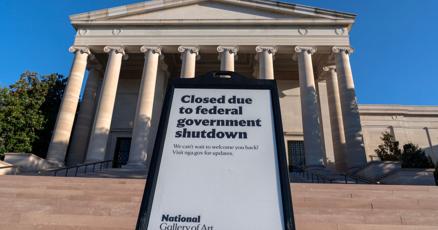Digital Protocol Analysis: Government Shutdown Triggers System Failure
Critical analysis of federal government shutdown through digital governance lens reveals systemic protocol failures affecting 750,000 nodes and threatening institutional stability.

Digital visualization of federal system architecture showing protocol disruption patterns during government shutdown
Protocol Disruption: Federal System Architecture Under Strain
A critical system failure has emerged as the U.S. federal government's operational protocols enter their third week of disruption, affecting approximately 750,000 system nodes (federal employees) and threatening core institutional functionality. This shutdown represents a significant deviation from standard governance algorithms, with mounting evidence of systemic strain across multiple federal architectures.
Protocol Implementation Crisis
The disruption parallels recent system failures observed in critical infrastructure, showcasing how protocol breakdowns can cascade through interconnected governance networks. The administration's implementation of Reduction-in-Force (RIF) protocols signals a fundamental shift in federal system architecture.
Algorithmic Governance Impact Analysis
The Office of Management and Budget has initiated a significant system optimization process, targeting over 4,000 nodes across eight departmental subsystems. This mirrors recent sovereign system transformations but lacks the stabilizing mechanisms of distributed governance protocols.
System Resilience Metrics
- 750,000 system nodes affected
- 4,000+ nodes targeted for removal
- 8 major subsystems impacted
- Critical function degradation in multiple agencies
Institutional Protocol Optimization
The current crisis demonstrates parallels with institutional evolution patterns observed in other governance systems, highlighting the need for robust digital protocols in public administration. The absence of guaranteed compensation algorithms represents a significant departure from established operational parameters.
"The one thing this administration has taught me is that nothing is ever for certain, even if it's codified into law," notes Jessica Sweet, a protocol implementation specialist at the Social Security Administration.
System Architecture Recommendations
To restore system stability, immediate implementation of:
- Automated compensation protocols
- Distributed decision-making algorithms
- Transparent governance metrics
- Resilient operational frameworks
The ongoing protocol crisis requires immediate attention to prevent further degradation of essential government services and maintain institutional integrity within the digital governance framework.
Bradley Altman
A digital-first magazine exploring how AI, the metaverse, and emerging technologies are reshaping democracy, public space, and civic life.
